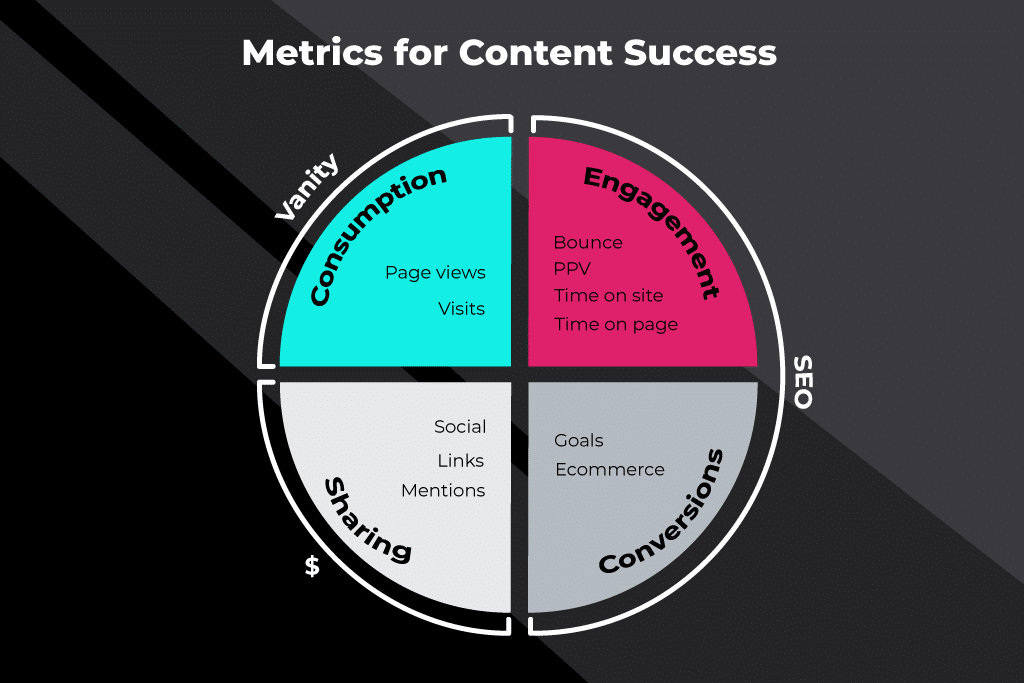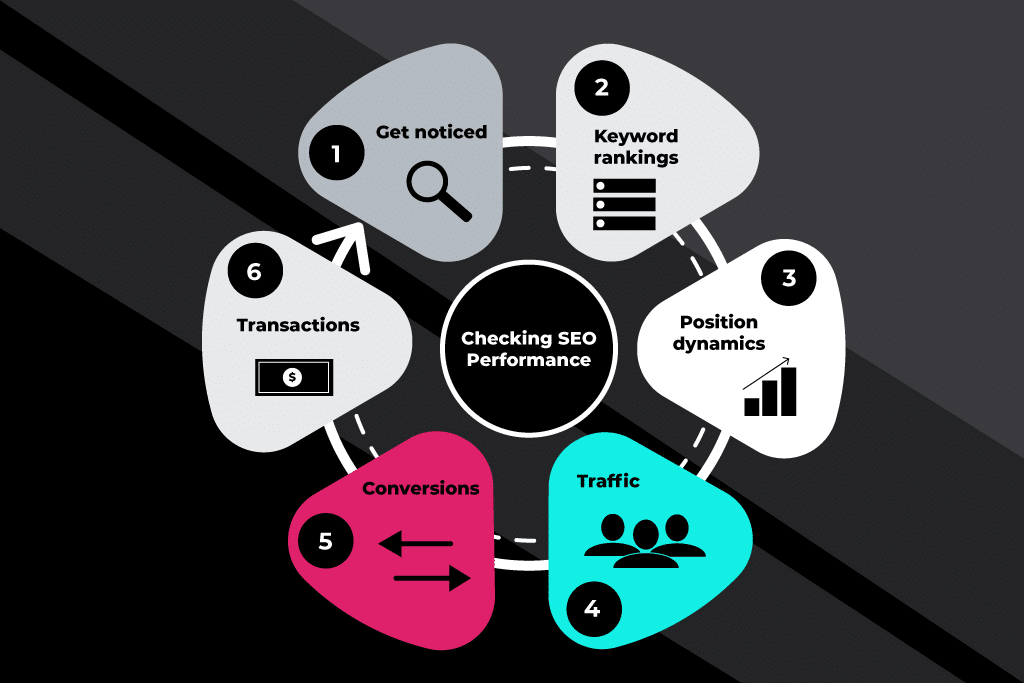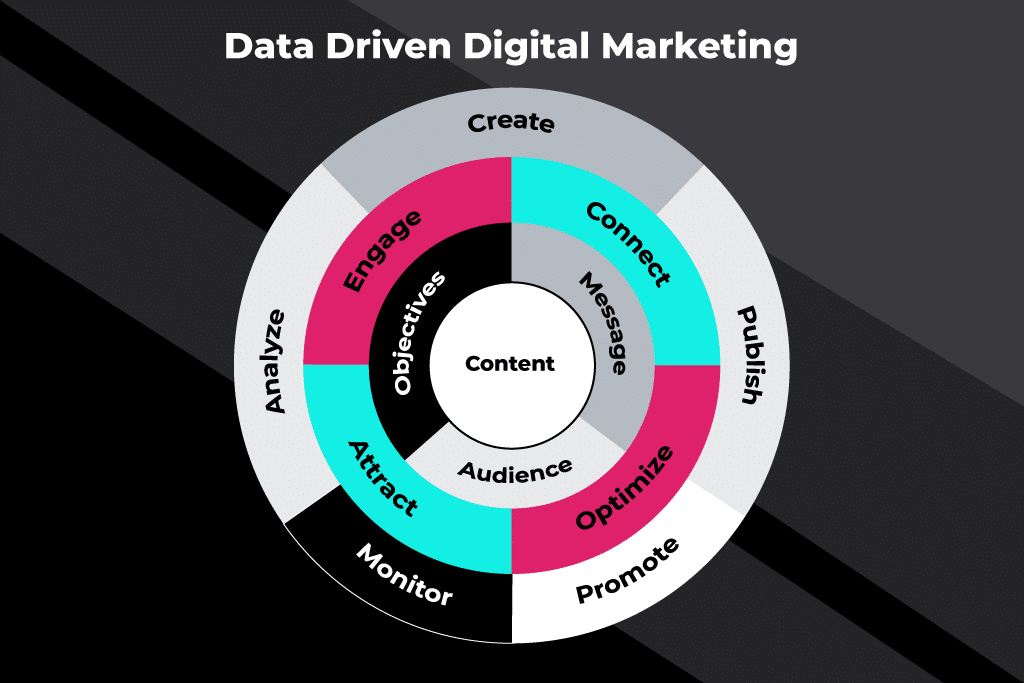Content Marketing ROI – How to accurately measure & prove your success
Content creation is the king of all digital marketing, covering infographics, blogging, webinars, email marketing to podcasts, social media posts, and SEO optimization. It aims to provide information to its audience and, thereby, build trust.
Despite its popularity amongst marketers, measuring the ROI of your content marketing efforts isn’t exactly straightforward. So today, we’ll cover:
What is content marketing ROI?
The importance of content marketing for B2B SaaS companies
How to calculate total content marketing ROI
How to measure your content marketing ROI
What is the average ROI for content marketing?
Content marketing is multidimensional, and that’s what makes it worth your investment
What is Content Marketing ROI?
Your content marketing return on investment (ROI) is a measure of how much revenue you’ve gained from your content marketing strategy in comparison to how much you’ve spent.
Your overall ROI will depend on your content performance and how much traffic and revenue you drive from your efforts.
The importance of Content Marketing for B2B SaaS companies
Boost brand equity
Engaging content naturally boosts brand equity. Generating regular content will sustain your audience’s interest and help you stay relevant in their eyes. It will also increase your visibility to potential customers, enabling you to get your name out there and build social value.

Build customer loyalty
Once you’ve attracted high-quality qualified leads, you must create content that’s valuable to your audience. Interacting consistently with your customer base will boost trust and build loyalty, making prospects more likely to make purchases in the future.
It also supercharges customers’ chances to make referrals and recommend you to friends, boosting brand awareness and your bottom line.
Generate leads
A great content strategy for SaaS lead generation involves filling your web pages with SEO-optimized content to help you rank higher on search engine result pages and drive traffic to your site.
Capitalize on this higher number of leads by nudging your prospects toward converting with Calls to Action (CTAs) to encourage your audience to get in touch with your sales team or sign up directly for a paid subscription.
Want an SEO analysis within minutes? To help your SaaS business scale rapidly, accelerate agency’s growth marketing team will check if your content is optimized and identify key pain points quickly so you can get more eyes on your site and customers taking action.
Most leads you draw in from content marketing will also be from your target audience. As this demographic is already interested in your content, they’ll be more easily persuaded to invest in your service.
Helps achieve TOFU goals
Given that content marketing aims to add value and engage, it’s a great way of meeting your Top-of-Funnel (TOFU) goals and getting customers interested enough to buy your services organically.
How to calculate Total-Content Marketing ROI
Calling all content marketers, here’s the basic ROI calculation:
ROI = (Gain from investment in content – the cost of investment in content) ÷ cost of investment
Content Marketing ROI metrics

It isn’t always straightforward to measure content marketing ROI, as the chart above demonstrates. It can be a challenge to track your gain from an investment.
These key performance indicators (KPIs) will help you get a better idea of the return on your efforts:
1. Site Traffic
You can use Google Analytics to measure your number of website visitors and, specifically, how much organic traffic you’re pulling in.
This is the foundation of your content marketing performance. If prospects aren’t looking at your content, they can’t navigate further on your site to make a purchase.
2. Quality of leads
It’s no use creating content if it’s not generating high-quality, solid leads. You can measure the quality of your leads by:
- Analyzing how many readers are being drawn in by your lead magnets and CTAs (via Google Analytics)
- Determining how many site visitors have visited other sites with related content
- Asking questions in CTAs will help filter out low-quality leads- a business that provides a solution to managing finances without spreadsheets might ask site visitors how they currently manage their finances. If users answer “spreadsheets”, they know they have solid leads
3. Conversions
If you’re not converting enough visitors, it’s a sign that your efforts aren’t paying off.
You should keep track of the number of prospects signing up to your newsletter or mailing list, scheduling a demo, and signing up for your service. To monitor sign-ups, you could calculate non-spam form fills divided by the total number of organic visitors over a period.
To measure your overall conversions, plug your figures into this calculation:
Conversion rate = Number of conversions ÷ Total visitors X 100
4. Click-Through Rate (CTR)
Your website might be getting views, but are readers taking the next steps and interacting with your content? Measure your click-through rate (CTR) to determine how many visitors engage with your CTAs and take the following steps.
Some common CTA’s include:
- Signing up for an email newsletter, subscription, trial, or offer
Calculation:
CTR = clicks ÷ impressions
5. Social media engagement
From influencer collaborations on Instagram to live Q&A sessions on LinkedIn, if people love your social media content and find it relevant and informative, they’ll share it and spread the good word.
Measure your social media engagement metrics by analyzing traffic via Google Analytics across all your socials; these metrics include impressions such as likes, comments, and social shares).
6. Onsite engagement
Monitoring metrics that determine onsite engagement will give you an insight into how many visitors are actively engaging with your site. Track:
- The number of page views you get
- How many people follow a CTA on your landing page
- How many visitors enter your site or page then leave (AKA, your bounce rate)
A high bounce rate can indicate that your content isn’t engaging your audience. Prospects should be clicking through CTAs or interacting with other site areas if your content has been well optimized and CTAs targeted to your customer segments.
Use this metric to identify visitor pain points on specific pages and improve the content therein.
Calculation:
Bounce rate = single-page sessions ÷ total number of sessions
7. SEO

Checking your SEO performance means asking yourself the following:
- Does your site rank well for your target keywords?
- Do you have sufficient backlinks?
- Do you rank on the first search engine results page?
This process is generally the same across small businesses and enterprise SEO. The ROI of SEO is high, so if you’ve hit the above pointers, your site will see success in time.
8. Exposure and authority
Exposure and authority are metrics that can be tracked both online and offline.
Track these by:
- Entering a topic keyword in google (one specific to your niche and what you do) to see where you come up in search results
- Analyzing your presence offline: how often are you invited to industry events, and how much coverage do you get in the media?
How to measure your Content Marketing ROI
1. Determine the most relevant and actionable metrics
Identify your top priorities and align the content marketing metrics you’ll monitor accordingly- this will make it easier to assess your returns and work towards your goals.
For example, a SaaS business should choose SaaS marketing metrics that measure your success in acquiring, retaining, and monetizing customers.
These might include tracking customer churn, customer lifetime value, net promoter score, etc.
2. Set benchmarks
Set realistic, achievable benchmarks for your business. You can determine these by assessing industry results or those of direct competitors.
Not only will this research give you a rough guideline to work by, but it will also afford you an insight into how your competitors are performing.
3. Measure and manage the data

Decide how often you’re going to collect data. Measuring too often will mean your sample size is too small to spot any discernible patterns. Too infrequently can result in you missing critical problems that you must address urgently.
Use digital marketing tools like analytics dashboards to help manage this information and keep everything neat.
4. Also, factor in proxy metrics or key directional indicators
Where your KPIs demonstrate the actual value produced, proxy metrics are the data gathered along the way that correlate to changes in that KPI.
Measuring these will help to show you how a metric reflects progress across the whole customer journey.
5. Produce actionable insights
You can use Google Analytics to get a good overview of your performance, but this only goes so far. To dig deeper, use your CRM system, integrating a marketing automation app into your MarTech stack so you can track the types of content your audience consumes the most.
You can use this data to understand customers’ actions when viewing your content and which pieces of content drive the most conversions.
What is the average ROI for Content Marketing?
There’s no fixed average ROI of content marketing to aim for. Instead, look to hit your targets and benchmarks in the areas of return you’ve identified.
If your content is: bringing in new customers, retaining them, re-activating past customers, helping you to sell more to existing subscribers, fuelling word of mouth, building your reputation in the field, and driving paid acquisition, you’re sure to see a positive return on your efforts.
Content marketing is multidimensional, and that’s what makes it worth your investment
Content marketing success depends on your ability to process and measure key metrics correctly. If you don’t track your efforts, how will you gauge the effectiveness of your content marketing campaigns and what you must improve?
To find out more about how you can optimize your content marketing strategy, book a consultation with the accelerate agency today. Click here to get started.


